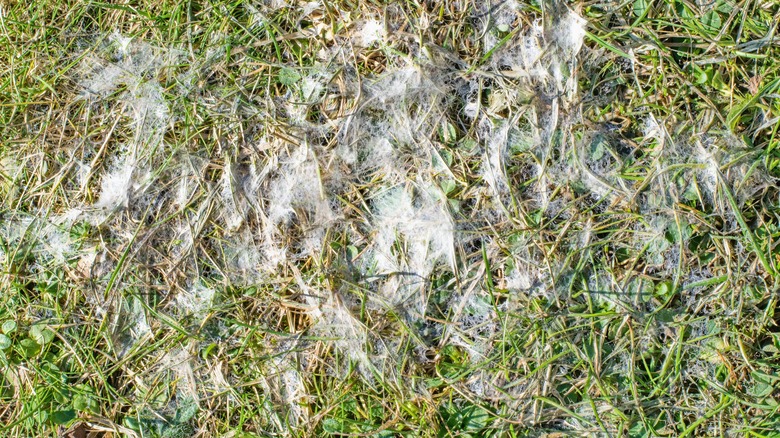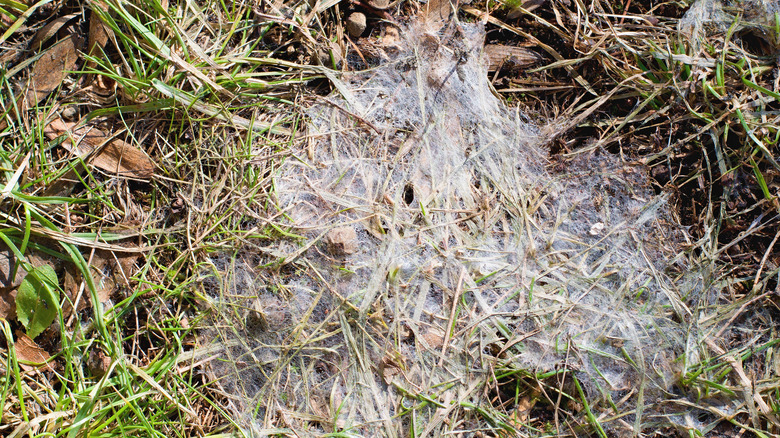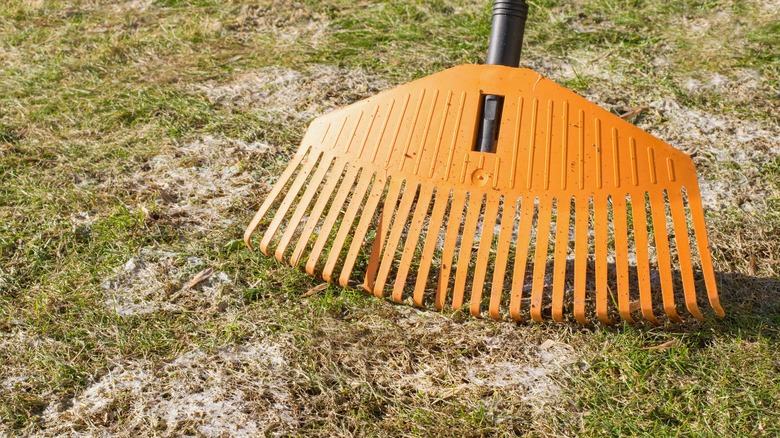What Is Snow Mold?
If you live somewhere that experiences colder weather during the winter, then you should consider how that chill and all that comes along with it might affect your home as well as what you can do to keep your property in an ideal condition. That includes how to save energy when the temperature dips and how to protect your deck. You might also look forward to the warmer weather, sunny days, and new plant growth that comes along with spring. However, there are a few unfortunate things that can happen to your home when you say goodbye to winter and welcome the warmer weather.
First, you might notice that your lawn is more than just damp and is overly saturated with melting snow and ice. This may mean that the water doesn't have anywhere to escape and you might need to address and improve how the moisture can leave your yard, according to Neave Group Outdoor Solutions. Beyond that, the salt that's used in the winter to deal with ice on sidewalks or walkways can make its way onto your property and cause damage to your grass, so you'll want to do your best to keep melting ice away from the growing lawn.
Finally, Neave Group Outdoor Solutions notes that when the snow melts, you may find yourself dealing with a particular kind of mold that's simply and aptly named snow mold.
Snow mold is a problem for various reasons
While you may know that snow mold isn't something that you want around, you might not be aware of the fact that there are different kinds of snow mold, according to Cardinal Lawns. There's both pink snow mold ,which is also known as Fusarium patch, and gray snow mold, which you might know as Typhula blight.
Whatever one you're dealing with, you might actually be able to sense that snow mold has made its way into your lawn before you spot it. That's because it can cause allergies, per PulseAir. The annoying physical response is due to the fact that just like other kinds of mold, snow mold is a type of fungus. A disease that attacks your yard, the mold spores can likely be found in the dirt during any season. The spores then come alive and the mold tends to pop up each year when the snow starts to come down. As soon as there is a frosty layer on your property, the mold can begin to thrive beneath it. When winter ends, the snow disappears, and not only does the mold appear but it also gets the chance to grow and can continue to make its way across your property.
While having even a small amount of snow mold around your home isn't ideal, you also don't want it to be able to spread and get worse. That's why it's important to know how to deal with this problem.
What to do about snow mold
Snow mold may be a nuisance, but it is something that you can both attempt to prevent and keep from getting worse. For instance, you can prepare your lawn for the winter months by using fertilizer before it gets too cold, which can definitely help to protect against snow mold, according to Best Greening Lawn Care Service. You also want to leave your grass a little long but not overgrown and need to get rid of any leaves and twigs that might be littered around your property. This will prevent an excess of moisture which can create an ideal breeding ground for snow mold.
When winter finally hits, Best Greening Lawn Care Service points out that you should aim to keep your yard clear of any abundant spots of snow that have built up on the lawn. The more snow that accumulates, the better chance it will have when it comes to sticking around and giving snow mold an opportunity to grow as the weather warms up.
If snow mold has managed to form on your lawn, then rest assured that all is not lost. After raking the problem areas and mowing away the damage, you can do what you might have done to prevent the issue in the first place, per Best Greening Lawn Care Service. That includes keeping your lawn clean and fertilized. If the issue is really bad, then you can also call in the professionals for a little help.


